Prices in AUD. Shipping worldwide. Flat rate $8 postage per order within Australia. International by weight calculated at checkout. Read full terms.
-
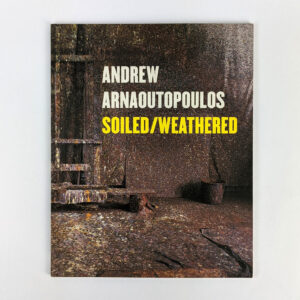
Soiled/Weathered
AU$10.00 Read MoreAdd to cartAndrew Arnaoutopoilos
Brisbane: Institute of Modern Art, 2002. -
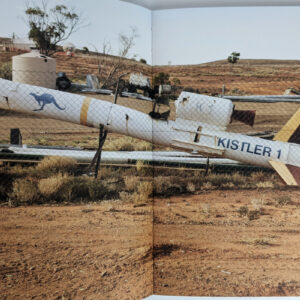
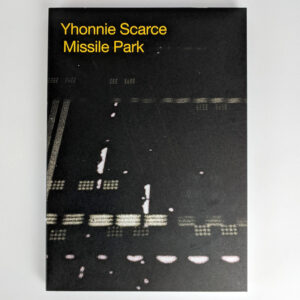
Missile Park
AU$25.00 Read MoreAdd to cartYhonnie Scarce
Brisbane: Institute of Modern Art, 2021.“Yhonnie Scarce: Missile Park is the first survey exhibition of leading contemporary artist Yhonnie Scarce, and brings a major new commission into dialogue with work that spans the past fifteen years of the artist’s career. Scarce’s works in this survey reference the on-going effects of colonisation on Aboriginal people, responding to research into the impact of nuclear testing and the removal and relocation of Aboriginal people from their homelands and the forcible removal of Aboriginal children from their families. Born in Woomera, South Australia in 1973, Scarce belongs to the Kokatha and Nukunu peoples, and family history is central to Scarce’s works in this show. This survey also includes major works that engage with the disciplinary forms of colonial institutions and representation-religion, ethnography, medical science, museology, taxonomy-as well as monumental and memorial forms of public art and remembrance.” (publisher’s blurb)
-
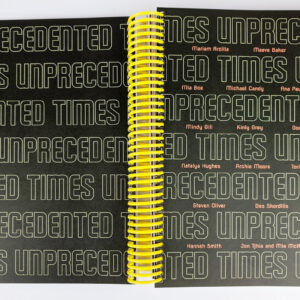

Making Art Work
AU$35.00 Read MoreAdd to cartLlewellyn Millhouse; Liz Nowell; Tulleah Pearce; Sarah Thomson
Brisbane: Institute of Modern Art, 2021.“This publication documents an initiative of the Institute of Modern Art, Making Art Work which proposed an experimental role for the institution as administrators of economic stimulus for artists. Taking place across 2020–during and post [COV..]-19 lockdowns–the project saw over 40 artists commissioned to create new works that reinforced the importance of creative labour at a time when the cultural and economic value of art had been diminished. Drawing from the politicised language of the crisis, each artist responded to the provocations posed by four curatorial pillars; Unprecedented Times, Industrial Actions, Permanent Revolution, and Relief Measures. Artist commissions spanned objects, texts, workshops, ephemeral projects, and more with the outcomes presented via makingart.work, and at the IMA Belltower. This publication complies these artworks alongside new essays from Sophia Nampitjinpa Sambono, Ian Were, Sarah Werkmeister, and Yen-Rong Wong, and a foreword from IMA staff Llewellyn Millhouse, Liz Nowell, Tulleah Pearce, and Sarah Thomson to create a document celebrating Queensland art and artists. Making Art Work commissioned artists included: Tony Albert, Kieron Anderson, Mariam Arcilla, Maeve Baker, Richard Bell, Mia Boe, Hannah Brontë, Michael Candy, Emil Cañita, Jacquie Chlanda, Monika Noémi Correa, Merinda Davies, Julian Day, Digi Youth Arts, ∑gg√e|n, Ana Paula Estrada, Chantal Fraser, Hannah Gartside, Mindy Gill, Channon Goodwin, Kinly Grey, Daisy Hamlot, Susan Hawkins, Rachael Haynes, Gordon Hookey, Natalya Hughes, Inkahoots, Peter Kozak, Jenna Lee, Mia McAuslan & Jon Tjhia, Amelia McLeish, Archie Moore, Tori-Jay Mordey, Sally Olds, Steven Oliver, Sarah Poulgrain, Refugee Solidarity Meanjin, Angelica Roache-Wilson, Amy Sargeant, Shandy, Jacqui Shelton, Des Skordilis, Hannah Smith, David Spooner, Grant Stevens, Tyza Stewart, and Liesel Zink.” (publisher’s blurb)
-
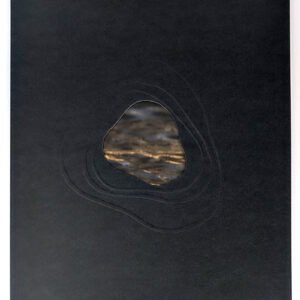
long water: fibre stories
AU$30.00 Read MoreAdd to cartFreja Carmichael
Brisbane: Institute of Modern Art, 2020.“long water: fibre stories illuminates spiritual, ancestral, and physical connections to water through fibre practices of artists from Yuwaalaraay (North West NSW), Quandamooka (Moreton Bay, South East QLD), Kuku Yalanji (Far North QLD), Zenadh Kes (Torres Strait Islands, QLD), Yurruwi (Milingimbi Island, NT), and surrounding homelands. Together this group–Aboriginal and Torres Strait Islander women, spanning different generations and ancestries–share an inseparable relationship to water, be it the vast sea, inland waterways, or expansive river systems. Collectively, long water celebrates the stories of regeneration and continuation of important cultural traditions, and the strong women and vital water places that sustain them. The country, and wide range of environments, practices, and knowledge represented speak to both deep time and contemporary experiences–bringing into focus the importance of water to our cultural health and our capacity for resilience.” (publisher’s blurb)
-
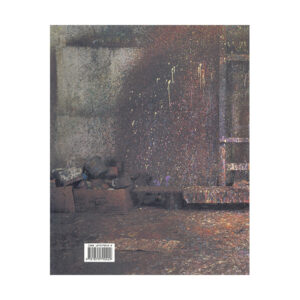
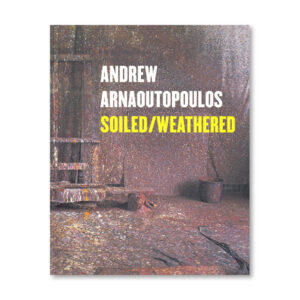
Soiled/Weathered
AU$20.00 Read MoreAdd to cartAndrew Arnaoutopoilos
Brisbane: Institute of Modern Art, 2002. -
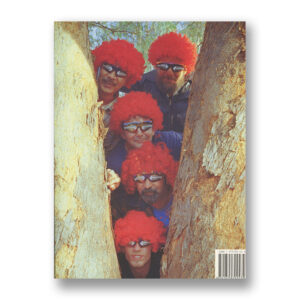
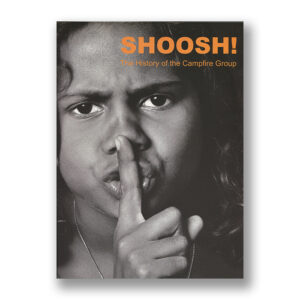
SHOOSH! The History of the Campfire Group
AU$25.00 Read MoreAdd to cartMichael Eather
Brisbane: Institute of Modern Art, 2005.“SHOOSH! The History of the Campfire Group harnesses the stories and ideas of so many people. This publication attempts to cover many of Campfire’s innovations and experiments, the odd political struggle, its creative idealism and artistic opportunism. It embraces numerous places and tales, the shared experiences of dozens of artists and scores of other fold who are too numerous to mention.”
-
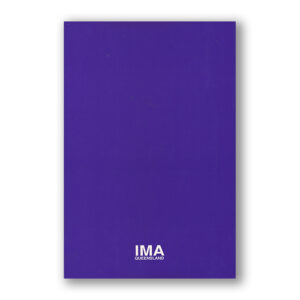
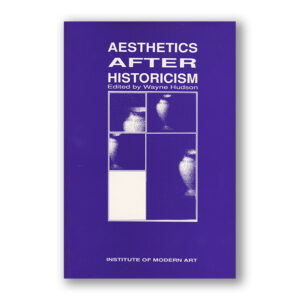
Aesthetics After Historicism
AU$15.00 Read MoreAdd to cartWayne Hudson
Brisbane: Institute of Modern Art, 1993. -
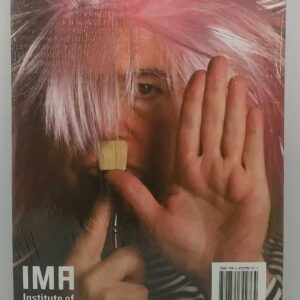
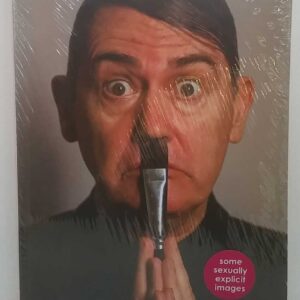
Luke Roberts: Alphastation / Alphaville
AU$20.00 Read MoreAdd to cartLuke Roberts; Evie Franzidis
Brisbane: Institute of Modern Art, 2012. -
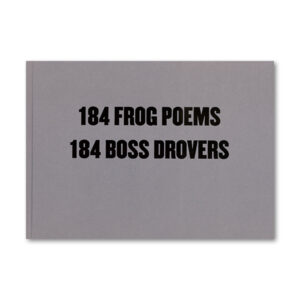
184 Frog Poems: 184 Boss Drovers
AU$40.00 Read MoreAdd to cartRobert MacPherson
Brisbane: Institute of Modern Art, 2001. -
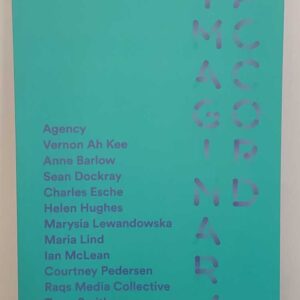
Imaginary Accord
AU$30.00 Read MoreAdd to cartAileen Burns; Madeleine King; Johan Lundh
Brisbane: Institute of Modern Art, 2017.“Is an art institution only an imagined entity–a temporary constellation of agreements, negotiations, and arrangements–or is it something more fixed? This publication both documents and reinvigorates the fortieth anniversary activities of the Institute of Modern Art (IMA): the exhibition Imaginary Accord; the nine-part lecture series and two-day symposium, What Can Art Institutions Do?; and the online archive, 40years.ima.org.au, that charts the IMA and its immediate historical context. This series of creative and critical projects explored the historical mission of one of Australia’s oldest public galleries, while imagining what the founding principles of a contemporary art institution could mean today and for the future.” (publisher’s blurb)
-
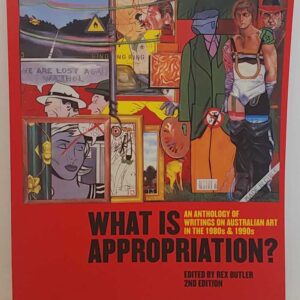
What Is Appropriation? An Anthology of Writings on Australian Art in the 1980s & 1990s
AU$45.00 Read MoreAdd to cartRex Butler
Brisbane: Institute of Modern Art, 2004.“It was probably Ad Reinhardt, though it could have been Sherrie Levine or even Andy Warhol, who remarked that you only know you are doing something original when everybody else is doing it. This book explores this and other paradoxes raised by the practice of appropriation the quotation and use of other artists’ work that became widespread in the 1980s. Why was the practice so uniquely popular in Australia? What did it say about the relationship of Australian art to the art of other countries; about white art to Aboriginal art; and about contemporary art to the art of the past? How and why does appropriation fundamentally challenge habitual ways of looking at pictures and thinking about art? The essays and pictures in this book provide answers to these questions, but always in the knowledge that the enigma of appropriation remains.”
-
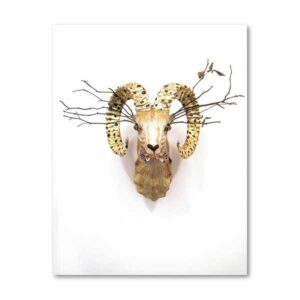
Peter Madden
AU$20.00 Read MoreAdd to cartEvie Franzidis
Brisbane: Institute of Modern Art, 2011.“New Zealand collage artist Peter Madden draws much of his imagery from old issues of National Geographic. He plunders and reworks the magazine’s discredited ’empire of signs’ to forge his own. His surrealistic pictures, objects, and installations—with their watchmaker detail and intensity—have been described as ‘microcosms’ and ‘intricate kingdoms of flying forms’ Madden has one foot in the vanitas still-life tradition and the other in new-age thinking. On the one hand, he is death obsessed: a master of morbid decoupage. (Moths and butterflies—symbols of transient life—abound. His assemblages in bell jars suggest some Victorian taxidermist killing time in his parlour.) On the other hand, with his flocks, schools, and swarms of quivering animal energy, he revels in biodiversity and magic. Madden’s works manage to be at once morbid and abundant, rotting and blooming, creepy and fey. This book serveys Madden’s work of the last ten years.” Essay by Tessa Laird. Interview by Robert Leonard.
